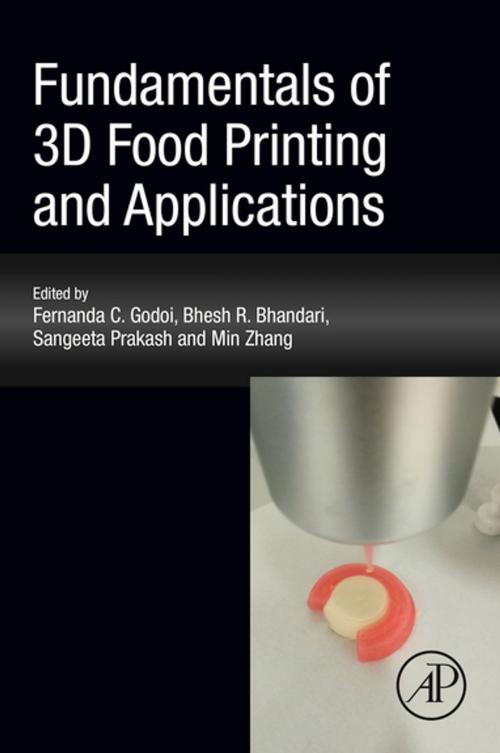Fundamentals of 3D Food Printing and Applications
Nonfiction, Science & Nature, Technology, Food Industry & Science| Author: | ISBN: | 9780128145654 | |
| Publisher: | Elsevier Science | Publication: | November 2, 2018 |
| Imprint: | Academic Press | Language: | English |
| Author: | |
| ISBN: | 9780128145654 |
| Publisher: | Elsevier Science |
| Publication: | November 2, 2018 |
| Imprint: | Academic Press |
| Language: | English |
Fundamentals of 3D Food Printing and Applications provides an update on this emerging technology that can not only create complex edible shapes, but also enable the alteration of food texture and nutritional content required by specific diets. This book discusses 3D food printing technologies and their working mechanisms within a broad spectrum of application areas, including, but not limited to, the development of soft foods and confectionary designs. It provides a unique and contemporary guide to help correlate supply materials (edible inks) and the technologies (e.g., extrusion and laser based) used during the construction of computer-aided 3D shapes.
Users will find a great reference that will help food engineers and research leaders in food science understand the characteristics of 3D food printing technologies and edible inks.
- Details existing 3D food printing techniques, with an in-depth discussion on the mechanisms of formation of self-supporting layers
- Includes the effects of flow behaviour and viscoelastic properties of printing materials
- Presents strategies to enhance printability, such as the incorporation of hydrocolloids and lubricant enhancers
- 3D printing features of a range of food materials, including cereal based, insect enriched, fruits and vegetables, chocolate and dairy ingredients
- Business development for chocolate printing and the prospects of 3D food printing at home for domestic applications
- Prosumer-driven 3D food printing
- Safety and labelling of 3D printed food
Fundamentals of 3D Food Printing and Applications provides an update on this emerging technology that can not only create complex edible shapes, but also enable the alteration of food texture and nutritional content required by specific diets. This book discusses 3D food printing technologies and their working mechanisms within a broad spectrum of application areas, including, but not limited to, the development of soft foods and confectionary designs. It provides a unique and contemporary guide to help correlate supply materials (edible inks) and the technologies (e.g., extrusion and laser based) used during the construction of computer-aided 3D shapes.
Users will find a great reference that will help food engineers and research leaders in food science understand the characteristics of 3D food printing technologies and edible inks.
- Details existing 3D food printing techniques, with an in-depth discussion on the mechanisms of formation of self-supporting layers
- Includes the effects of flow behaviour and viscoelastic properties of printing materials
- Presents strategies to enhance printability, such as the incorporation of hydrocolloids and lubricant enhancers
- 3D printing features of a range of food materials, including cereal based, insect enriched, fruits and vegetables, chocolate and dairy ingredients
- Business development for chocolate printing and the prospects of 3D food printing at home for domestic applications
- Prosumer-driven 3D food printing
- Safety and labelling of 3D printed food















